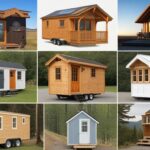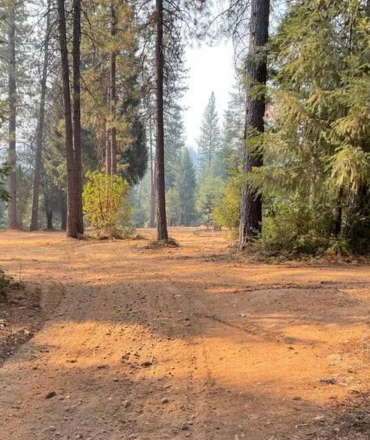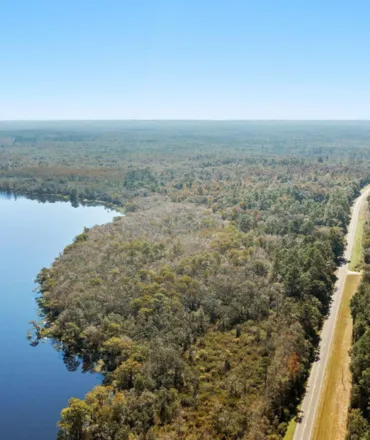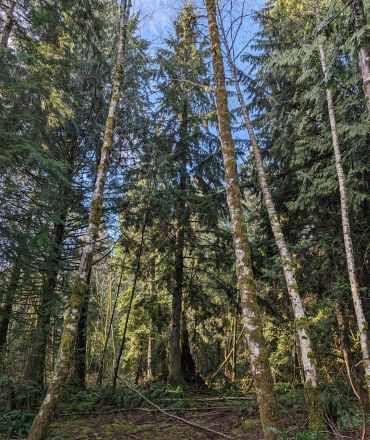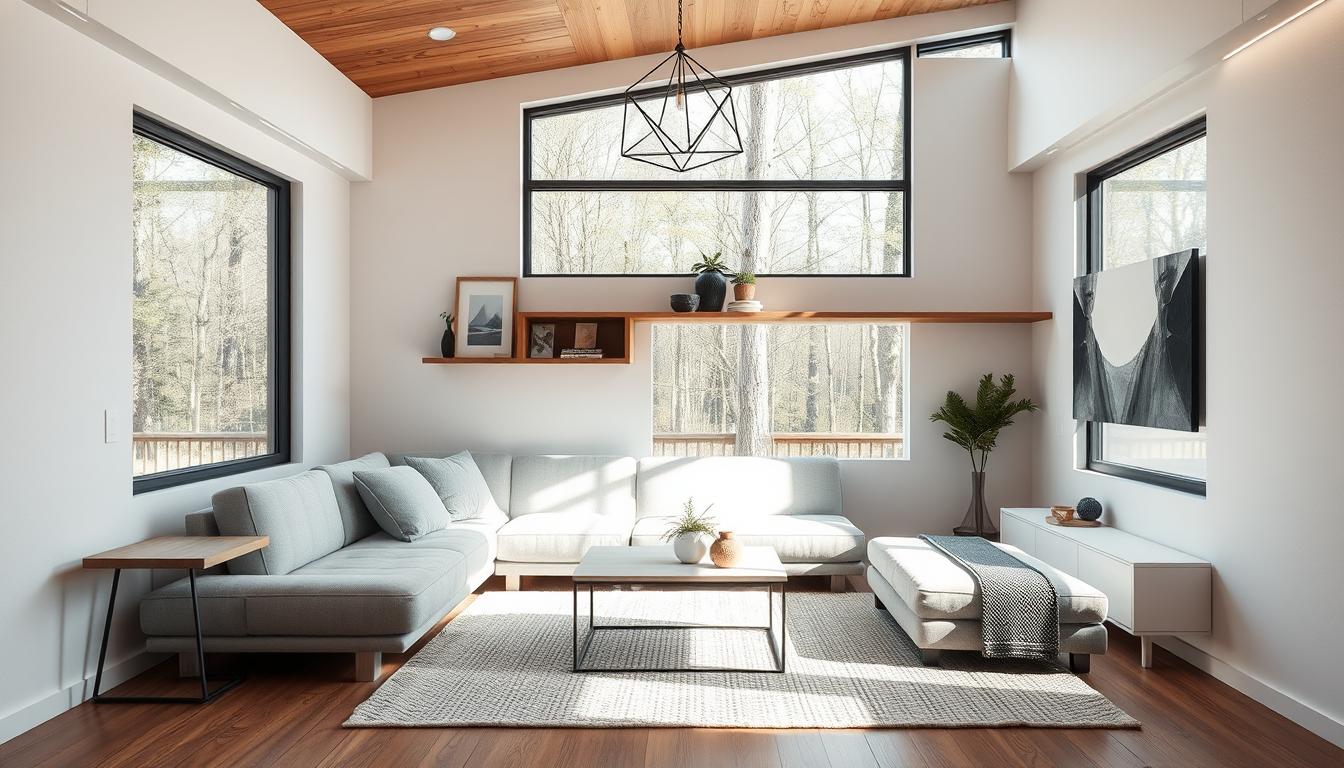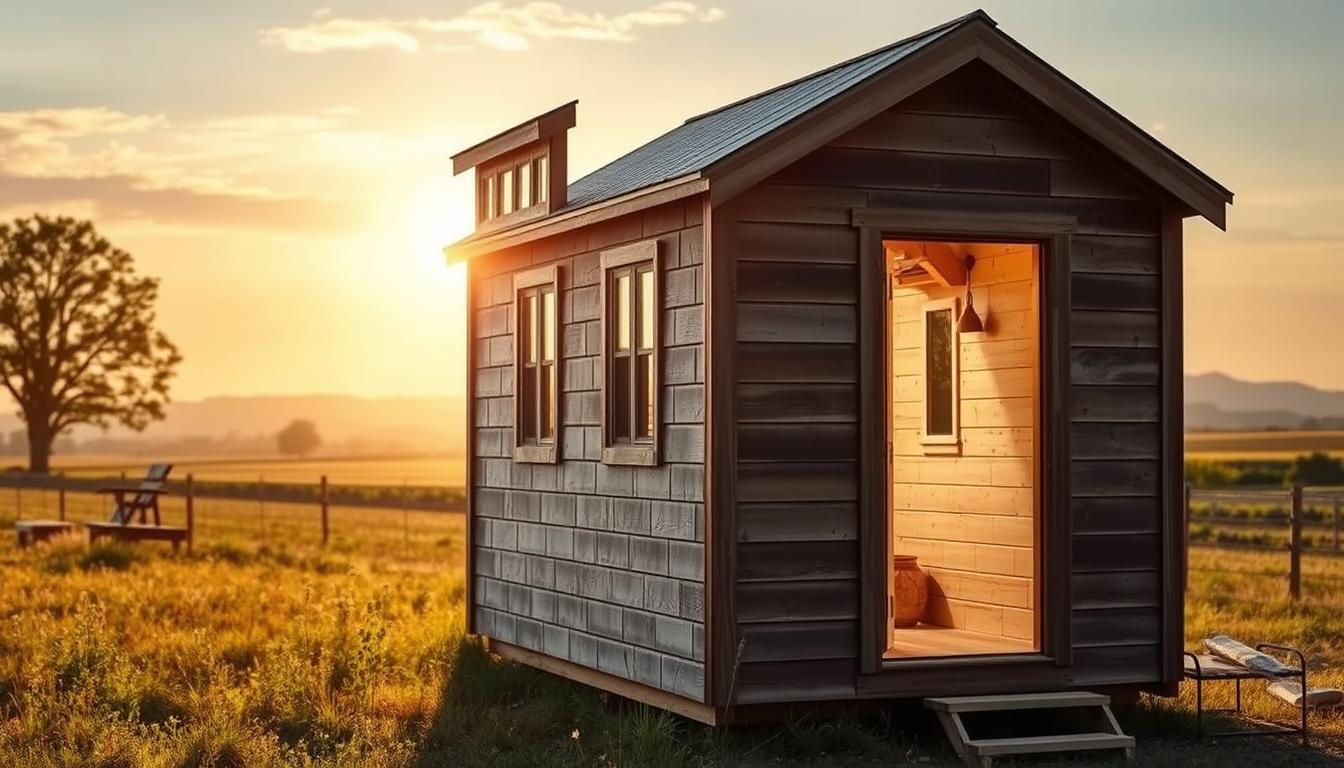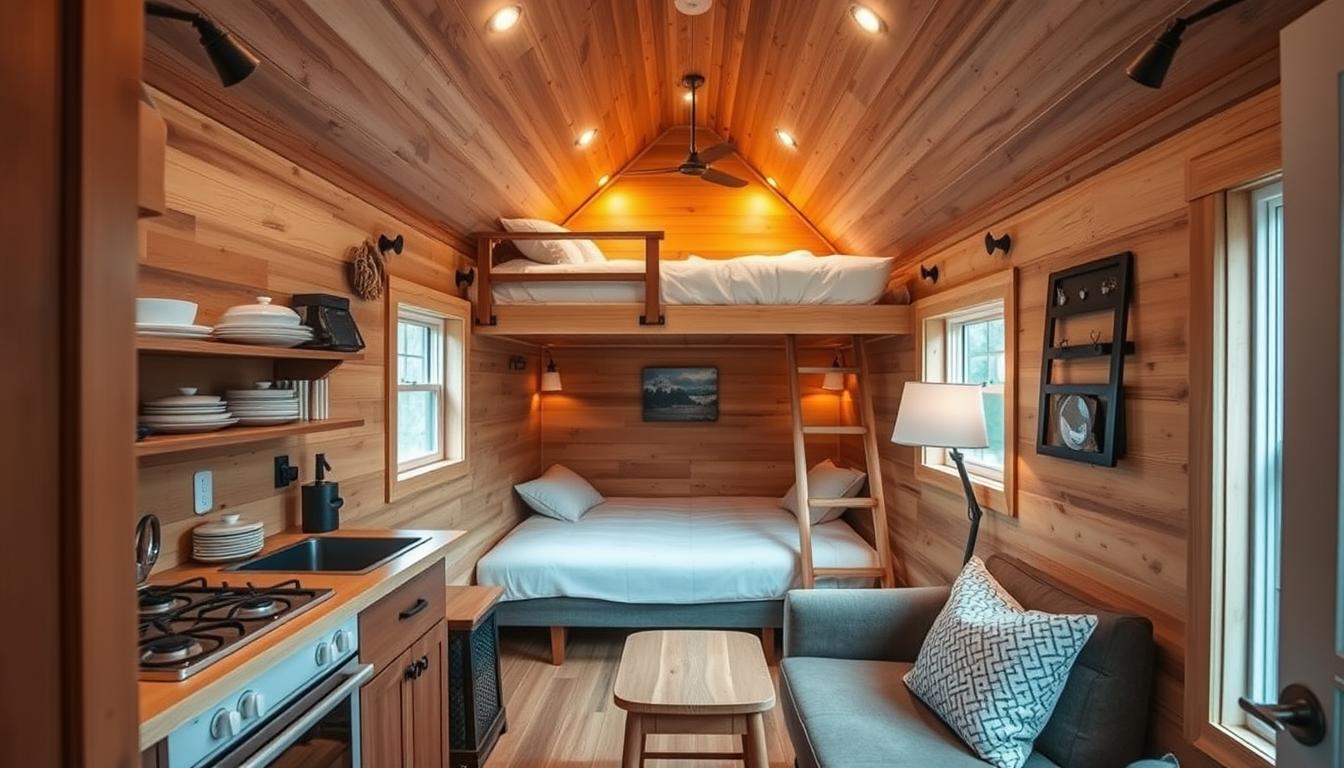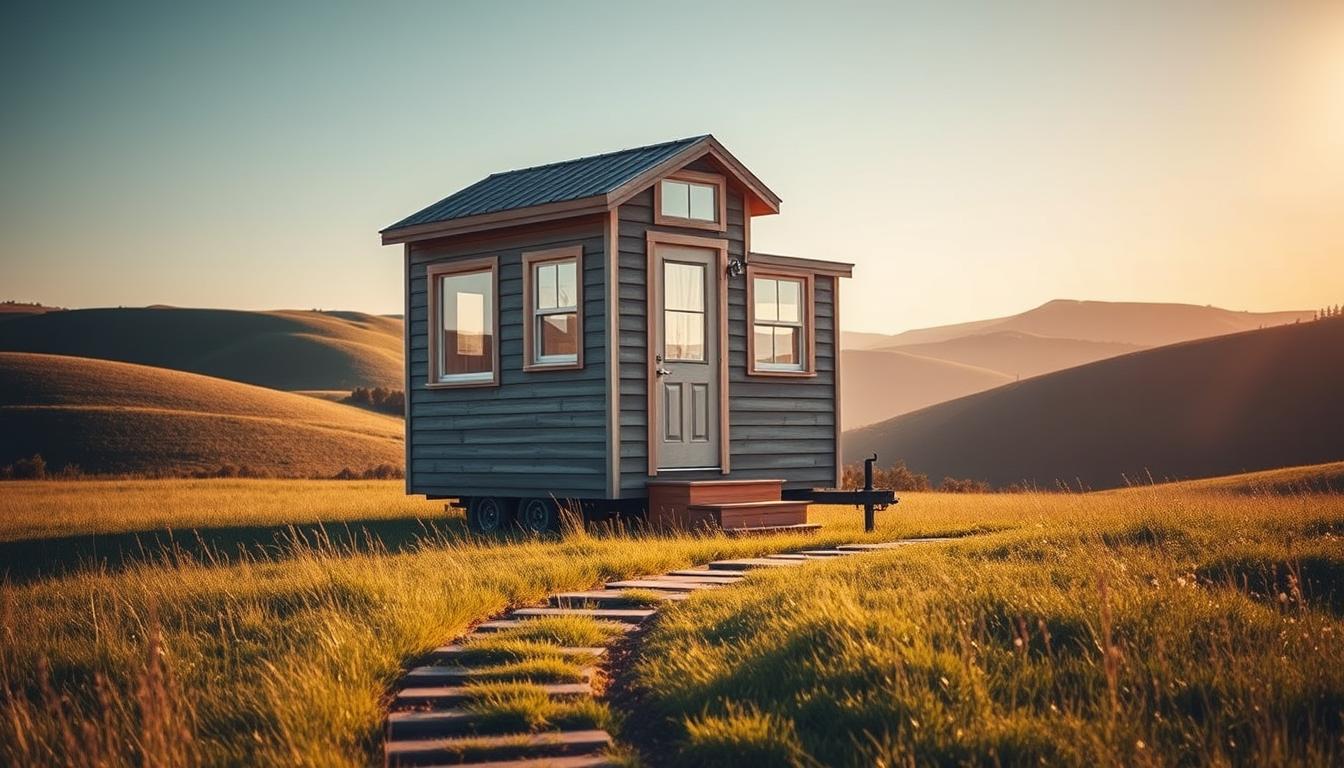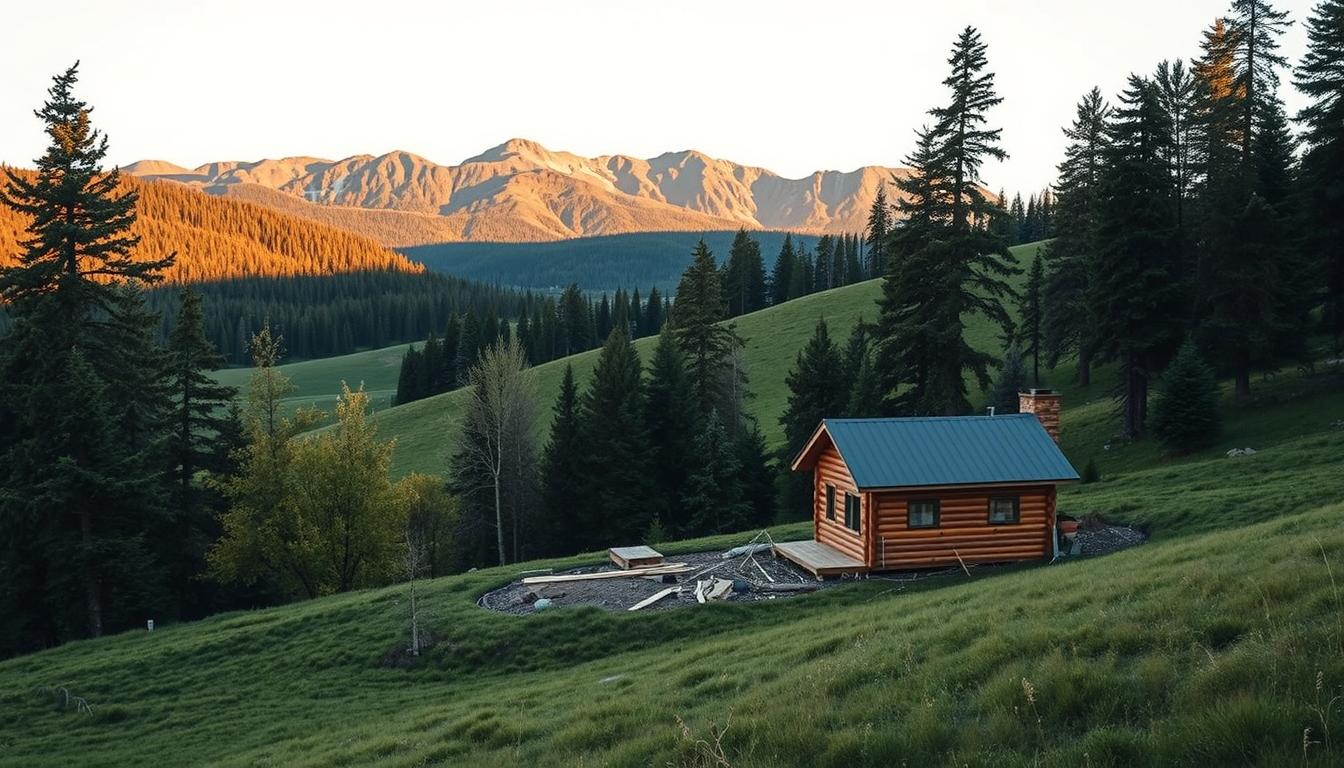What you will learn about tiny house costs
- Definition and key features of tiny houses.
- Factors that affect the cost of a tiny house such as location, size, materials, and design options.
- The cost breakdown of a tiny house including foundation, structure, insulation, plumbing, electrical, appliances, and finishes.
- Budgeting for a tiny house including necessary expenses like land, permits, construction materials, utilities, and furnishings.
- Cost-saving tips for building or buying a tiny house such as using reclaimed materials, energy-efficient fixtures, and DIY projects.
- Hidden expenses to consider like maintenance, insurance, land costs, utilities, and off-grid options.
- Financing options for tiny houses including personal loans, RV loans, construction loans, and crowdfunding.
- Real-life case studies of successful tiny house projects with budgets and cost-saving strategies.
- The importance of careful planning, research, and budgeting for an affordable tiny house project.
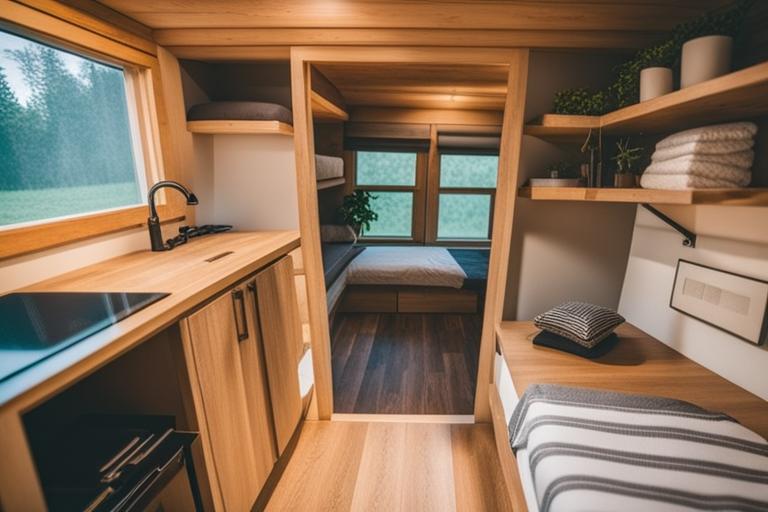
Definition and key features of tiny houses
Tiny houses have become a popular housing option for those seeking a simpler and more sustainable way of living. These compact dwellings typically range from 100 to 400 square feet in size and are designed to maximize space efficiency. They often feature clever storage solutions, multi-purpose furniture, and innovative designs that make the most of every square inch.
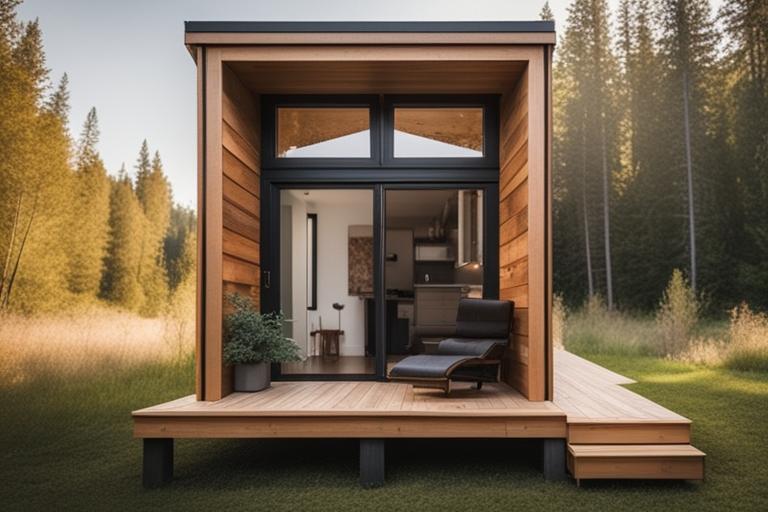
Benefits of living in a tiny house
Living in a tiny house offers numerous benefits beyond just the financial aspect. One of the main advantages is affordability. Tiny houses are generally much more affordable than traditional homes, both in terms of upfront costs and ongoing expenses. They require less energy to heat and cool, resulting in lower utility bills. Additionally, their smaller size means less space to clean and maintain, freeing up time for other activities.
Tiny houses are also environmentally friendly. With their reduced footprint, they require fewer resources to build and operate. Many tiny house owners choose to incorporate sustainable features such as solar panels, rainwater collection systems, and composting toilets, further reducing their impact on the environment. Living in a tiny house can also promote a simpler and more intentional lifestyle, as it encourages individuals to declutter and prioritize experiences over material possessions.
Factors Affecting the Cost of a Tiny House
Several factors influence the cost of a tiny house. By understanding these factors, potential homeowners can better estimate their budget and plan accordingly.
Location
Location plays a significant role in the overall cost of a tiny house. The cost of land varies greatly depending on the area, and it can significantly impact the budget. Urban areas and desirable locations tend to have higher land prices. Additionally, zoning regulations and building codes can vary from one location to another, which may affect the cost of permits and construction requirements.
Size
Unsurprisingly, the size of a tiny house directly affects its cost. The larger the tiny house, the more materials and labor will be required, resulting in higher expenses. However, it’s important to find a balance between size and livability. While a smaller tiny house may be more affordable, it’s crucial to ensure it still meets the homeowner’s needs and provides enough space for comfortable living.
Materials used
The choice of materials used in the construction of a tiny house can significantly impact its cost. High-quality and sustainable materials tend to be more expensive but may offer long-term savings in terms of durability and energy efficiency. On the other hand, using reclaimed or recycled materials can help reduce costs while adding a unique and eco-friendly touch to the tiny house.
Design and customization options
The level of customization and complexity in the design of a tiny house can also affect its cost. Custom-built tiny houses with intricate designs and unique features may require additional labor and specialized expertise, resulting in higher expenses. However, opting for a simpler design and standard features can help keep costs down.
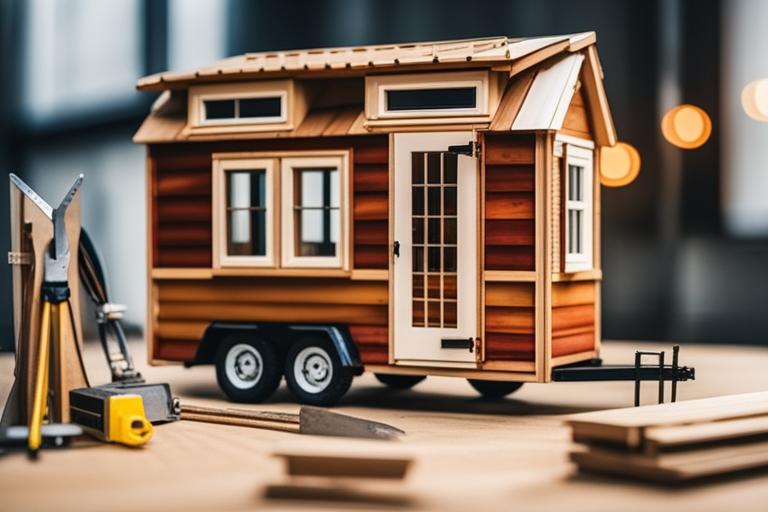
Building vs. Buying a Tiny House
When considering a tiny house, individuals have two main options: building their own or buying a pre-built one. Each option has its advantages and disadvantages, and it’s essential to weigh them carefully before making a decision.
Cost comparison
Building a tiny house can often be more cost-effective than buying a pre-built one. By purchasing materials directly and doing the construction work themselves, homeowners can save on labor costs. However, it’s important to consider the time and effort required for building a tiny house, as it can be a significant commitment.
On the other hand, buying a pre-built tiny house offers convenience and a faster move-in process. While the upfront cost may be higher, individuals can avoid the time and stress associated with construction. It’s crucial to compare the prices of pre-built options with the estimated cost of building a similar tiny house to determine which option is more financially viable.
Advantages and disadvantages of building a tiny house
Building a tiny house allows for complete customization and the satisfaction of creating a home from scratch. It provides an opportunity to incorporate personal preferences and specific design features. Additionally, building a tiny house can be a fulfilling and rewarding experience for those who enjoy hands-on projects and have the necessary skills or are willing to learn.
However, building a tiny house requires significant time, effort, and dedication. It involves various tasks, including acquiring permits, sourcing materials, and handling construction challenges. It’s essential to have realistic expectations and be prepared for the potential setbacks and delays that may arise during the building process.
Advantages and disadvantages of buying a pre-built tiny house
Buying a pre-built tiny house offers convenience and a faster move-in timeline. It eliminates the need for extensive construction and allows individuals to start enjoying their tiny house sooner. Pre-built options often come with standard features and may include warranties, providing peace of mind to homeowners.
However, the main disadvantage of buying a pre-built tiny house is the limited customization options. While there may be some flexibility in choosing finishes and layouts, it may not be possible to incorporate specific design preferences or unique features. Additionally, pre-built tiny houses tend to be more expensive than DIY options, primarily due to the labor and expertise involved in their construction.
Budgeting for a Tiny House
Before embarking on a tiny house project, it’s crucial to create a comprehensive budget that takes into account all the necessary expenses. The following are key considerations when budgeting for a tiny house:
Creating a budget
Start by determining the total amount you are willing to spend on your tiny house project. Consider your financial situation, including any existing savings or financing options. It’s important to be realistic and set a budget that aligns with your financial capabilities.
Considering all necessary expenses
To create an accurate budget, it’s essential to consider all the expenses associated with building or buying a tiny house. The following are some of the major cost components to include:
1. Land
If you plan to purchase land for your tiny house, factor in the cost of acquiring the property. Research local real estate prices and consider any additional expenses such as surveying, land development, or landscaping.
2. Permits and zoning requirements
Obtaining permits and complying with zoning regulations is a crucial step in building a tiny house. Research the requirements in your area and factor in the associated costs, including permit fees and any necessary inspections.
3. Construction materials and labor
Estimate the cost of materials needed for the construction of your tiny house. This includes framing materials, insulation, roofing, windows, doors, and finishes. If you plan to hire professionals for certain aspects of the construction, such as plumbing or electrical work, include the cost of labor in your budget.
4. Utilities and hookups
Consider the cost of connecting your tiny house to utilities such as electricity, water, and sewage. If you plan to live off-grid, research the costs associated with alternative energy sources and self-sustainability options.
5. Furnishings and appliances
Factor in the cost of furnishing your tiny house with essential items such as furniture, kitchen appliances, and bathroom fixtures. Consider both the upfront cost and any ongoing maintenance expenses.
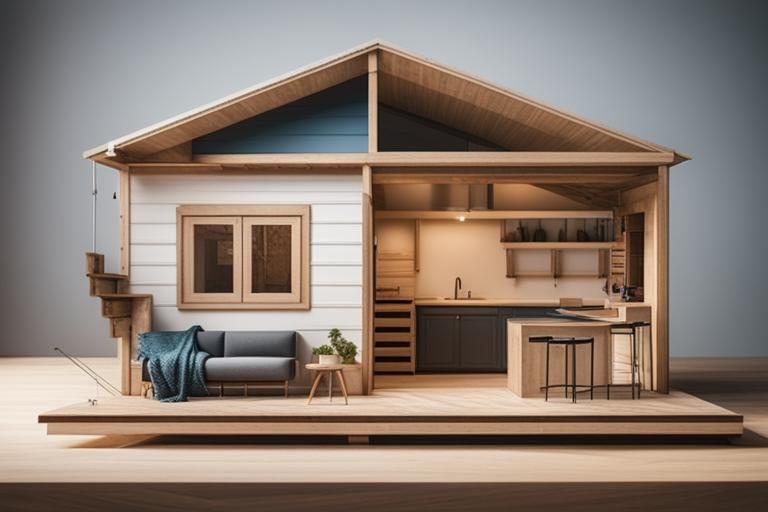
Cost Breakdown of a Tiny House
Understanding the cost breakdown of a tiny house can provide a clearer picture of where the budget is allocated. While the specific costs may vary depending on factors such as location and design choices, the following are the major cost categories to consider:
Foundation and site preparation
The cost of site preparation and foundation depends on the chosen method. Options include a traditional concrete foundation, a crawl space, or a mobile trailer. Each option has its associated costs, so it’s essential to evaluate which is the most suitable for your needs and budget.
Structure and framing
The framing of the tiny house includes the walls, roof, and floor. The cost of framing materials, such as lumber, insulation, and sheathing, should be factored into the budget. If you’re building on a trailer, consider the cost of reinforcing it to support the weight of the structure.
Insulation and weatherproofing
Proper insulation is crucial for energy efficiency and comfort in a tiny house. Research different insulation options and their associated costs. Additionally, account for weatherproofing measures such as sealing windows and doors to prevent drafts and moisture infiltration.
Roofing and exterior finishes
The cost of roofing materials and exterior finishes depends on the chosen materials and design preferences. Consider factors such as durability, maintenance requirements, and aesthetic appeal when estimating the costs.
Plumbing and fixtures
If your tiny house includes a bathroom or kitchen, factor in the cost of plumbing materials, fixtures, and installation. This may include pipes, drains, faucets, showers, toilets, and sinks.
Electrical system and wiring
Estimate the cost of electrical materials and wiring required for your tiny house. This includes outlets, switches, breaker panels, and lighting fixtures. If you’re not comfortable with electrical work, consider hiring a licensed electrician to ensure safety and compliance.
Appliances and kitchen setup
If your tiny house includes a kitchen, consider the cost of appliances such as a refrigerator, stove, and microwave. Additionally, factor in the cost of kitchen cabinets, countertops, and any other necessary fixtures or storage solutions.
Interior finishes and storage solutions
Include the cost of interior finishes such as flooring, wall coverings, paint, and trim. Additionally, consider the cost of storage solutions such as built-in cabinets, shelving, and multipurpose furniture.
Cost-Saving Tips for Building or Buying a Tiny House
Building or buying a tiny house doesn’t have to break the bank. By implementing cost-saving strategies, individuals can reduce expenses without compromising on quality or comfort. Consider the following tips:
Using reclaimed or recycled materials
Utilizing reclaimed or recycled materials can add character to a tiny house while reducing costs. Salvaged items such as doors, windows, flooring, or fixtures can be repurposed and give a unique touch to the space. Additionally, consider sourcing materials from local salvage yards or online marketplaces to find affordable options.
Opting for energy-efficient appliances and fixtures
Investing in energy-efficient appliances and fixtures may have a higher upfront cost but can result in long-term savings. Look for appliances with high energy efficiency ratings and consider LED lighting to reduce electricity consumption.
DIY projects and labor
Taking on certain tasks yourself can save money on labor costs. If you have the skills and time, consider handling aspects such as painting, landscaping, or interior finishes. However, it’s essential to be realistic about your abilities and seek professional help when necessary to avoid costly mistakes.
Hidden Expenses to Consider
When budgeting for a tiny house, it’s crucial to account for hidden expenses that may arise throughout the process. These expenses can have a significant impact on the overall cost and should not be overlooked. Some hidden expenses to consider include:
Maintenance and repairs
Like any home, tiny houses require regular maintenance and occasional repairs. Account for the cost of general upkeep such as painting, roof repairs, or plumbing maintenance. Additionally, consider setting aside a contingency fund for unexpected repairs that may arise.
Insurance coverage and premiums
Insuring a tiny house is important to protect your investment. Research insurance options specifically tailored to tiny houses and include the cost of coverage and premiums in your budget.
Land lease or purchase costs
If you plan to place your tiny house on leased land, factor in the cost of the lease agreement. Alternatively, if you decide to purchase land, consider mortgage payments or financing options and include them in your budget.
Utility connections and ongoing expenses
Connecting your tiny house to utilities such as electricity, water, and sewage may require upfront costs. Additionally, include ongoing utility expenses in your budget, such as monthly electricity or water bills.
Off-grid options and self-sustainability costs
If you plan to live off-grid or incorporate self-sustainability features, research the associated costs. This may include installing solar panels, rainwater collection systems, composting toilets, or alternative heating sources.
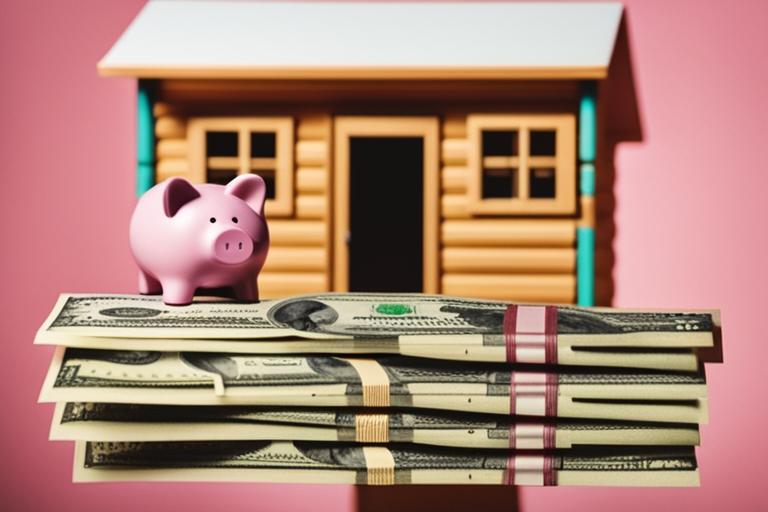
Financing Options for Tiny Houses
Financing a tiny house project is an important consideration for many individuals. While traditional mortgage options may not be available, several financing alternatives can help make the dream of owning a tiny house a reality.
Personal loans and home equity lines of credit
Individuals with good credit may be eligible for personal loans or home equity lines of credit (HELOCs). These financing options can provide the necessary funds to build or buy a tiny house, with the advantage of potentially lower interest rates compared to other options.
RV loans and specialized tiny house financing
As tiny houses are often classified as recreational vehicles (RVs), RV loans may be an option for financing. Some financial institutions offer specialized loans specifically designed for tiny houses, which can provide favorable terms and flexible repayment options.
Construction loans and FHA loans
For those building their own tiny house, construction loans can provide the necessary funds throughout the building process. Additionally, individuals may explore Federal Housing Administration (FHA) loans, as they can be used for certain tiny house projects that meet specific criteria.
Crowdfunding and community support
Crowdfunding platforms can be a viable option to raise funds for a tiny house project. Sharing your story and vision with the community can attract support from individuals who resonate with your goals. Additionally, consider reaching out to local organizations or nonprofits that support alternative housing initiatives.
Case Study: A Successful Tiny House Project on a Budget
Background
Meet Sarah, a 28-year-old freelance graphic designer who had always dreamed of owning her own home but couldn’t afford the skyrocketing prices in her city. Determined to find a more affordable housing solution, Sarah stumbled upon the world of tiny houses. Intrigued by their minimalist design and cost-effective nature, she decided to embark on her own tiny house project.
Budgeting and Planning
Sarah knew that careful budgeting was crucial for her project’s success. She set a strict budget of $30,000 and began researching various cost-saving strategies. She opted for a DIY approach, as she had some construction experience and wanted to save on labor costs.
Design and Construction
Sarah carefully designed her tiny house to maximize space and minimize costs. She chose a simple yet functional layout and sourced reclaimed materials for her construction. By using salvaged wood, windows, and fixtures, she was able to significantly reduce her expenses without compromising on quality.
Building Process
Sarah dedicated her weekends and evenings to the construction process. With the help of a few friends, she tackled each step of the build, from framing to insulation and interior finishes. While it was a labor-intensive endeavor, Sarah found joy in the process and developed new skills along the way.
Final Cost Breakdown
After completing her tiny house project, Sarah tallied up her expenses. Here is a breakdown of her costs:
- Land: $5,000 (purchased a small plot in a rural area)
- Construction materials: $10,000 (including reclaimed wood, windows, and fixtures)
- Utilities and hookups: $2,000 (installation of water, electricity, and sewage connections)
- Furnishings and appliances: $3,000 (basic furniture and energy-efficient appliances)
Total Cost
In the end, Sarah’s total cost for her tiny house project amounted to $20,000, well below her initial budget. By carefully planning, utilizing cost-saving strategies, and putting in the effort herself, she was able to achieve her dream of homeownership without breaking the bank.
Sarah’s story showcases the possibilities of building a tiny house on a budget. With careful planning and research, it is possible to create an affordable and personalized living space that meets your needs and financial constraints. Whether you choose to build or buy a tiny house, always remember that proper budgeting and thoughtful decision-making are key to a successful project.
Case Studies of Tiny House Projects
Real-life case studies provide valuable insights into the costs and strategies implemented in successful tiny house projects. By examining these examples, individuals can gain inspiration and learn from the experiences of others. The following are a few case studies of tiny house projects:
Case Study 1: How Much Does a Tiny House Cost
This case study explores the cost breakdown of a DIY tiny house project, including the materials used, labor involved, and cost-saving strategies implemented.
Case Study 2: Tiny House Cost: A Budget-Friendly Approach
In this case study, we delve into a budget-friendly tiny house project that prioritizes affordability without sacrificing quality and comfort.
Case Study 3: How Much Does a Tiny House Cost? A Sustainable Perspective
This case study focuses on a sustainable tiny house project, highlighting the use of eco-friendly materials, energy-efficient features, and self-sustainability options.
By considering the factors affecting the cost of a tiny house, weighing the pros and cons of building vs. buying, and creating a comprehensive budget, individuals can make informed decisions and successfully navigate the process of owning a tiny house.
Q & A
What is the average cost of building a tiny house?
The average cost of building a tiny house is around $25,000 to $50,000.
How can I reduce the cost of building a tiny house?
You can reduce the cost of building a tiny house by using reclaimed materials and DIY techniques.
Who can help me finance my tiny house project?
There are lenders who specialize in financing tiny house projects, such as tiny house-specific banks or online platforms.
What are some hidden costs of owning a tiny house?
Hidden costs of owning a tiny house include land rental fees, utilities, and maintenance expenses.
How long does it take to build a tiny house?
The time it takes to build a tiny house varies, but it can typically range from a few weeks to several months depending on complexity.
What if I change my mind about living in a tiny house?
If you change your mind about living in a tiny house, you can sell it or convert it into a guest house, office, or rental property.
John Smith is a licensed architect and sustainable design expert with over 10 years of experience in the field. He has a passion for creating innovative and efficient living spaces, and has specialized in tiny house design and construction throughout his career.
John has worked on numerous tiny house projects, both as a designer and a builder, giving him a comprehensive understanding of the costs and considerations involved in building and buying a tiny house. He has also conducted extensive research on the subject, studying the latest trends and best practices in the industry.
In addition to his practical experience, John holds a Master’s degree in Architecture from a prestigious university. He has written articles and spoken at conferences about sustainable design and the benefits of tiny house living. His expertise and attention to detail make him a trusted source of information for those interested in exploring the world of tiny houses.
